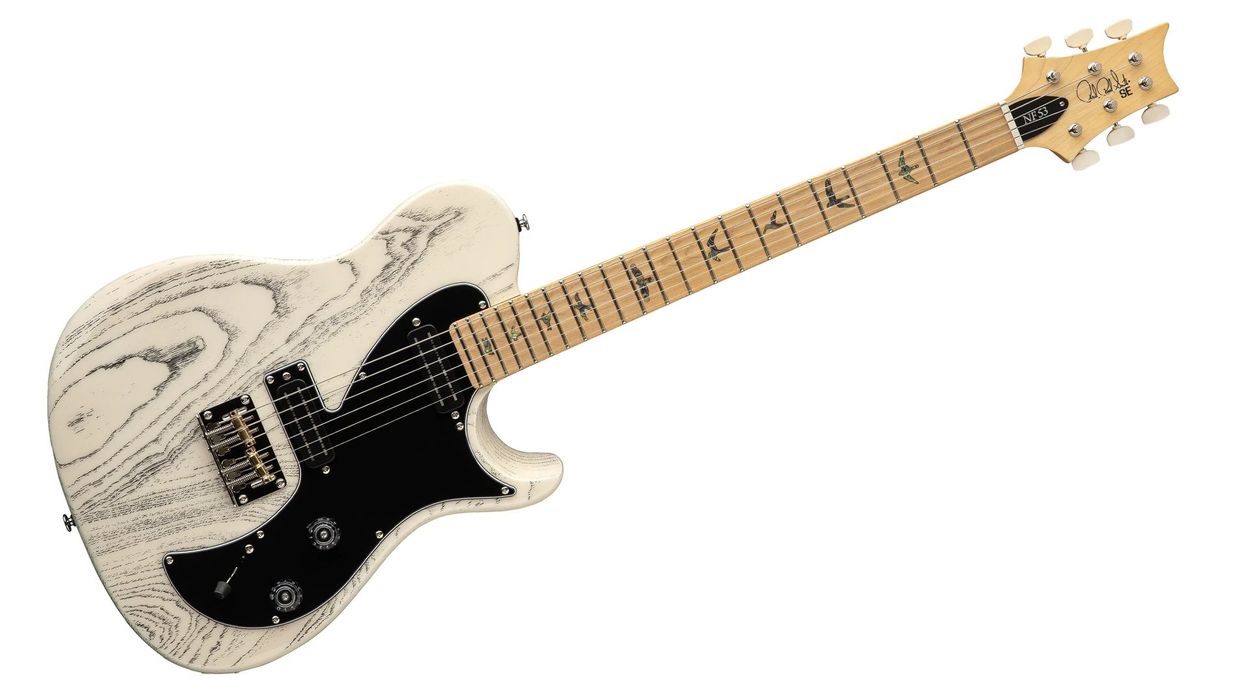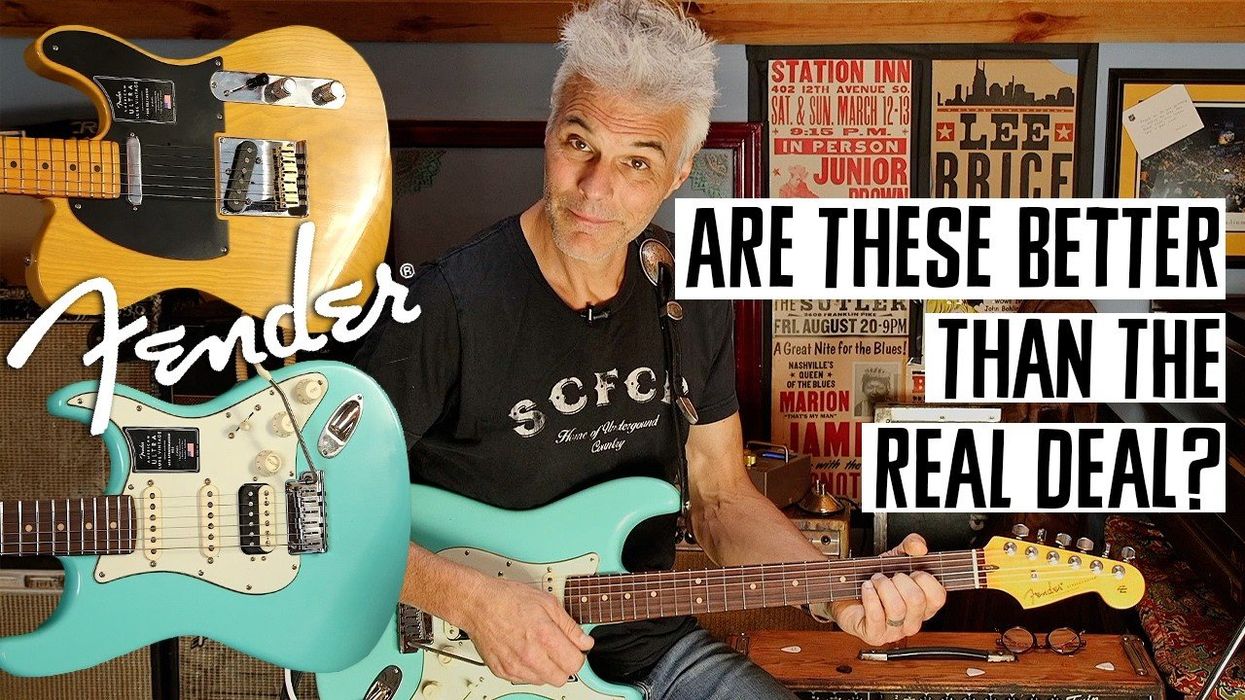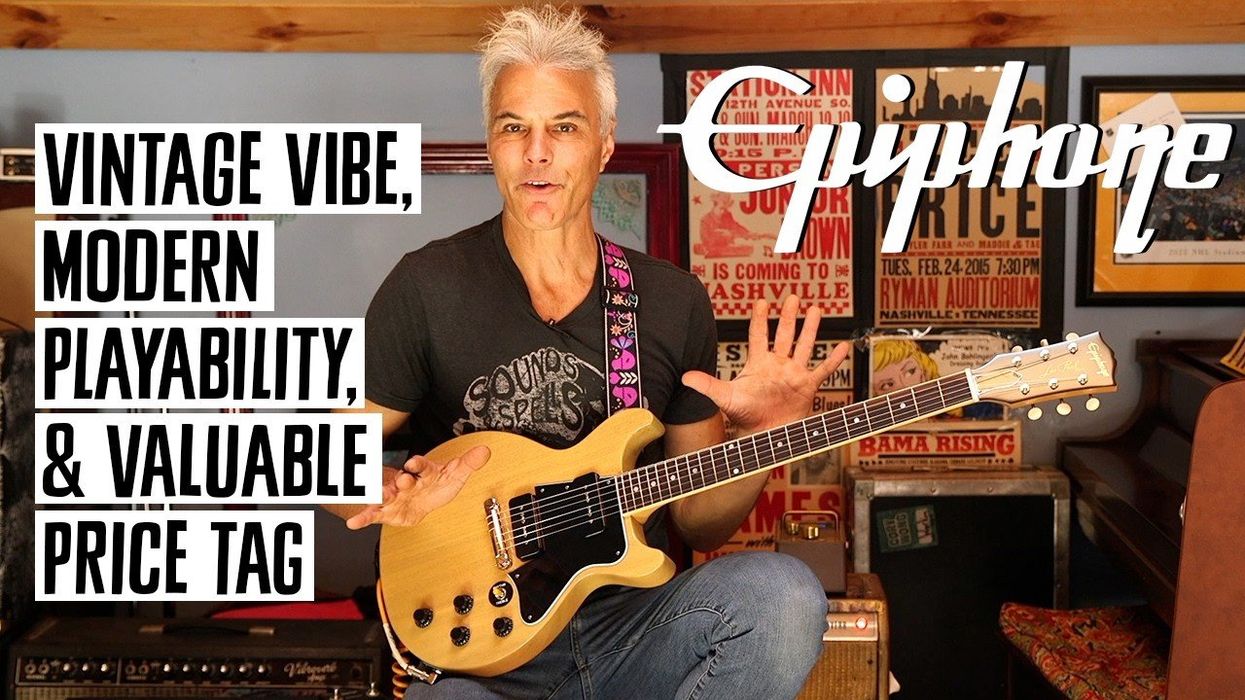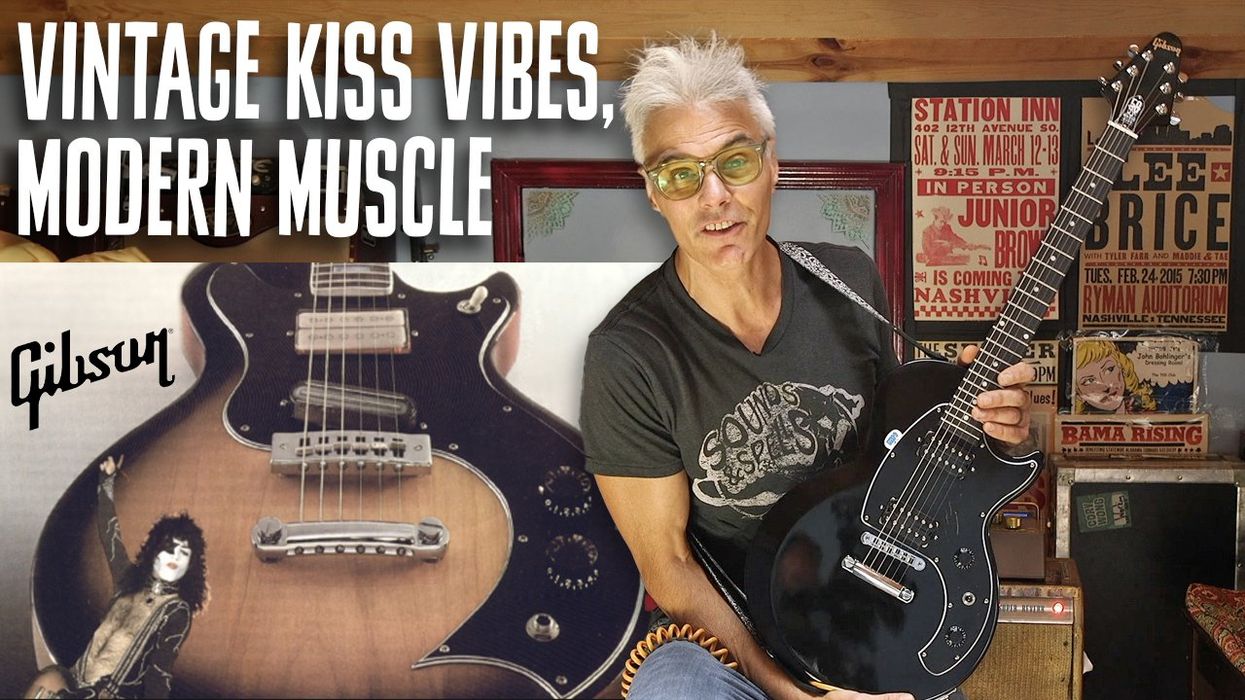Tampa, FL (May 19, 2020) -- Dean Guitars introduces the new Colt Bigsby with Piezo in Vintage White, the latest addition to the company’s Standard Series of electric guitars. This guitar is groomed to be gorgeous, but hardwired with enough horsepower to burn up any stage. Beyond its stunning white finish and gold trimmings, there’s much more to the Colt Bigsby than what meets the eye. This unique semi-hollow electric is loaded with DMT (Dean Magnetic Technologies) pickups, a piezo, with dual passive outputs, plus an Original Bigsby bridge that puts it over the top. Whether the player wants the warmth and flair of classic rock ‘n roll on one song or the complexities of Travis picking on the next, the versatile Colt Bigsby with Piezo accommodates a range of styles and techniques.
Dean starts with a classic, vintage-style Colt body with an arched top. The acoustic-inspired F holes compliment the semi-hollow body, allowing the maple’s natural resonance to ring out with rich tone. This design feature is also ideal for the built-in piezo at the bridge, which picks up the guitar’s acoustic qualities with clarity and a beautiful sound. Further enhancing tone, the set-through construction on the maple neck helps transfer the natural resonance between the neck and body. The Vintage White finish with 3-ply white/black/white binding gives the Colt Bigsby an extra touch of sophistication.
On the Colt Bigsby, players have endless electronic options to lock in their ideal sound, starting with the dual-output jack. Players can bypass the piezo and use the magnetic pickup configuration only, use the piezo only, or use both patched independently to a stereo or blended mono setup. The gold-finished DMT (Dean Magnetic Technologies) neck and bridge pickups from the are built to satisfy the most discerning of gear heads. Controls include the two different volumes (piezo and passive) and a master tone finished with top hat gold knobs, as well as the 3-way mini toggle. Dean enhances the Colt Bigsby's vintage appeal by utilizing the Bigsby Original Tremolo bridge. The Bigsby is ideally suited for slow, subtle, or extended tremolo. Combined, the Colt Bigsby's features allow for an endless variety of tones, from cleans to dirties or from jazz to rock ‘n roll.
To further enhance playability, the Colt Bigsby offers a dual-action truss rod and comfortable C-shape neck at 25 ½’’ scale. The sleek ebony fretboard has pearloid block inlays on the 22 tall and narrow (2.4 mm by 1.2 mm) frets at 16’’ radius. The polymer white plastic nut offers a 1 -11/16’’ width. Gold Grover tuners on the Vintage White headstock provide stability for the best-selling D'Addario EXL110 strings.
From top to bottom, the Colt Bigsby with Piezo offers a design that’s ahead of the herd, at an incredible value of $1199 street. A Dean Deluxe Hard Case or Deluxe Gig Bag is available for add-on.
Watch the company's video demo:
For more information:
Dean Guitars


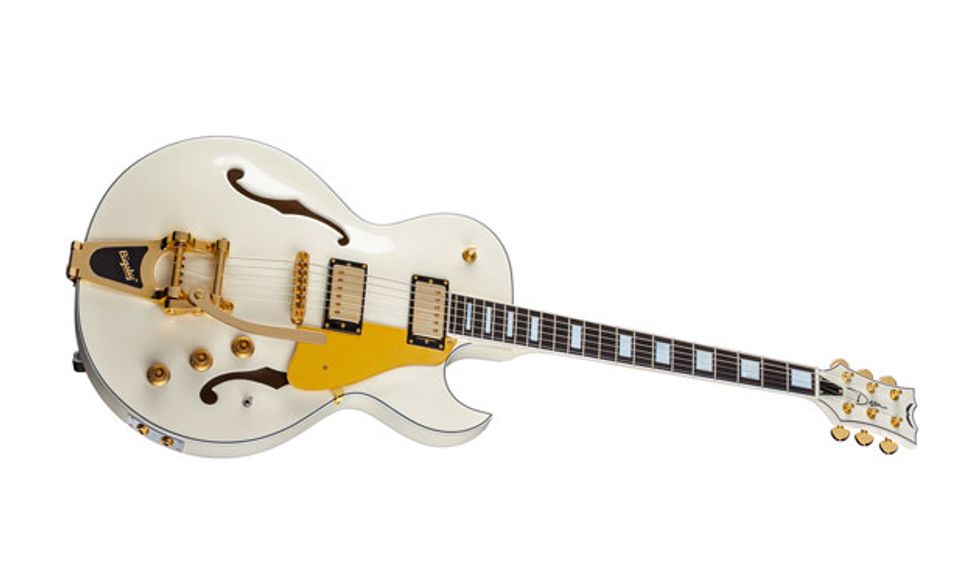


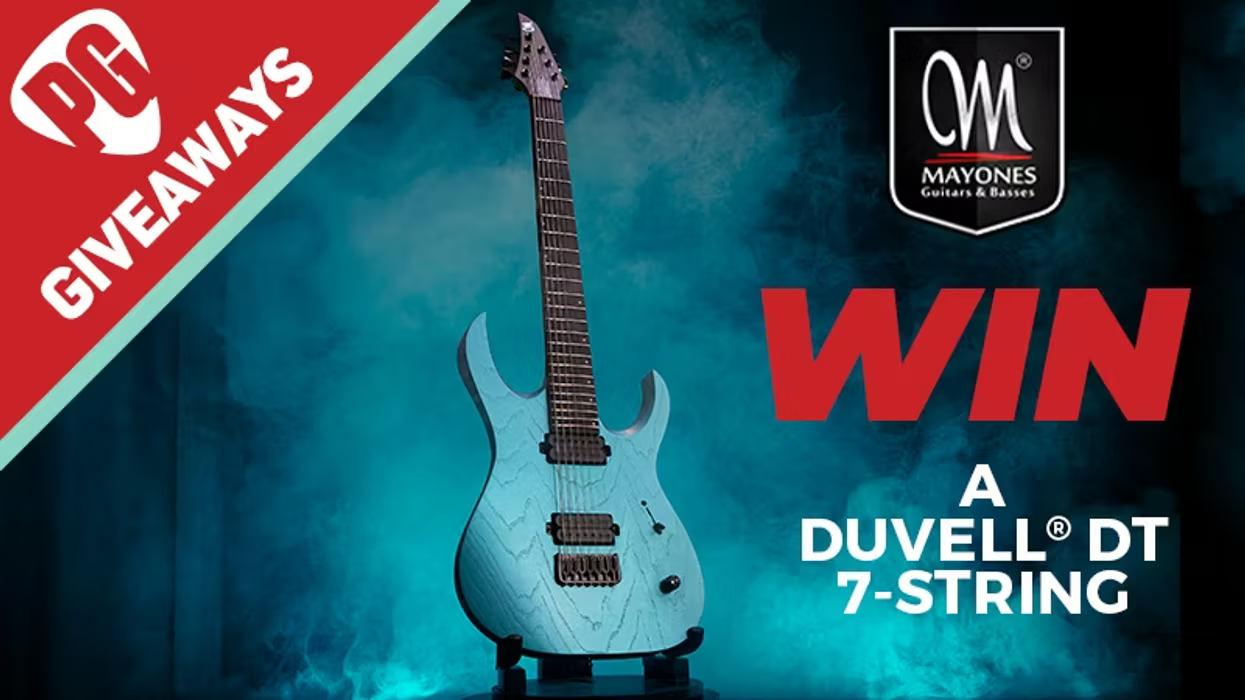

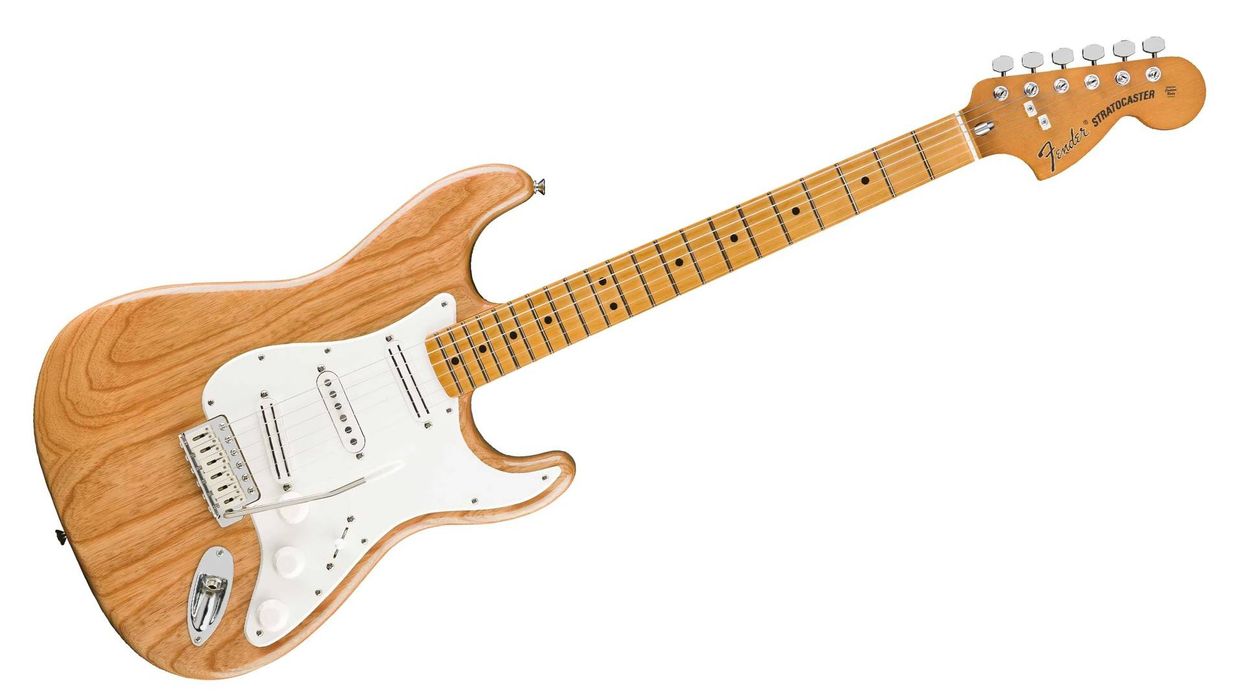


![Rig Rundown: Russian Circles’ Mike Sullivan [2025]](https://www.premierguitar.com/media-library/youtube.jpg?id=62303631&width=1245&height=700&quality=70&coordinates=0%2C0%2C0%2C0)



![Rig Rundown: AFI [2025]](https://www.premierguitar.com/media-library/youtube.jpg?id=62064741&width=1245&height=700&quality=70&coordinates=0%2C0%2C0%2C0)
